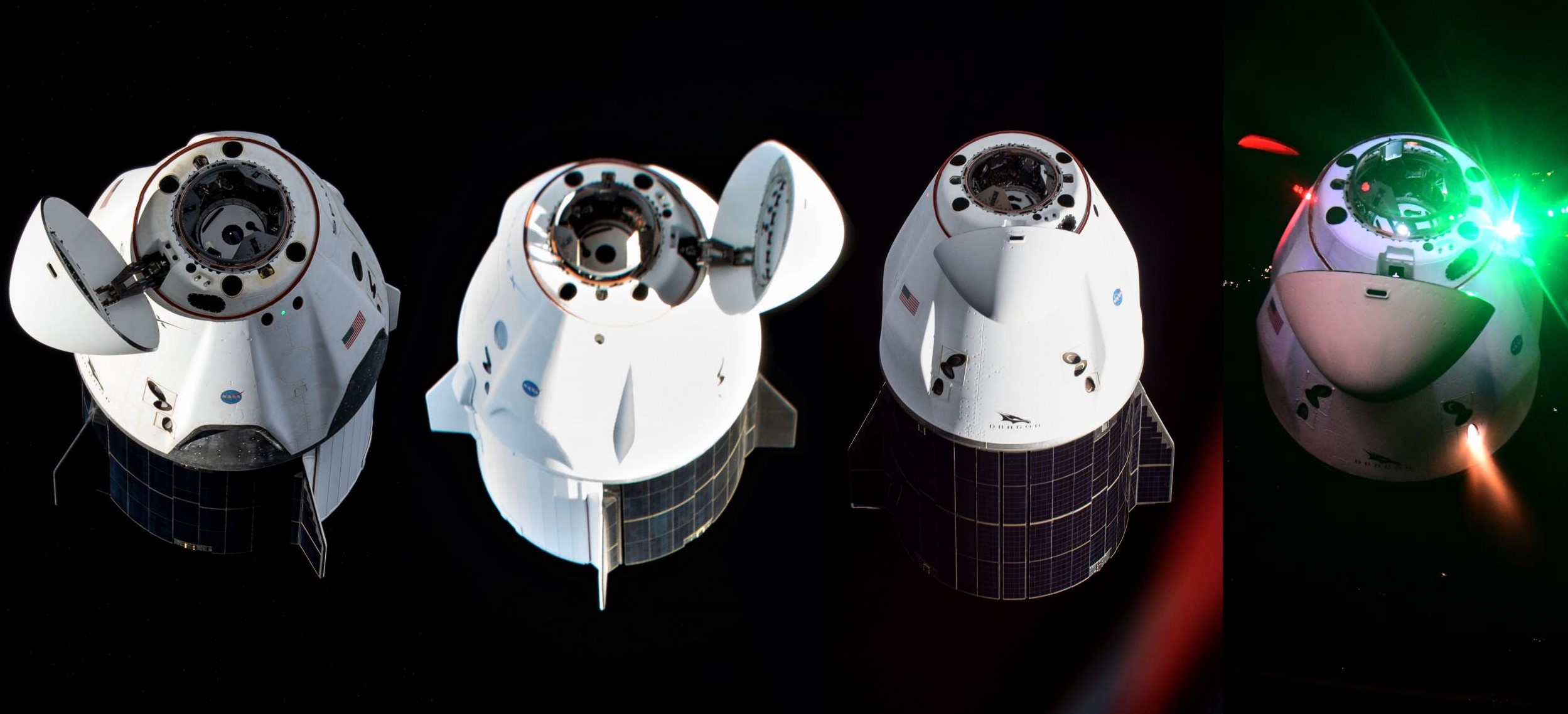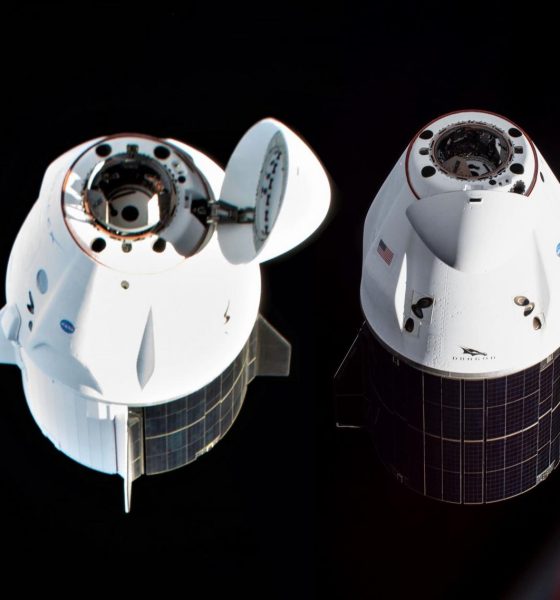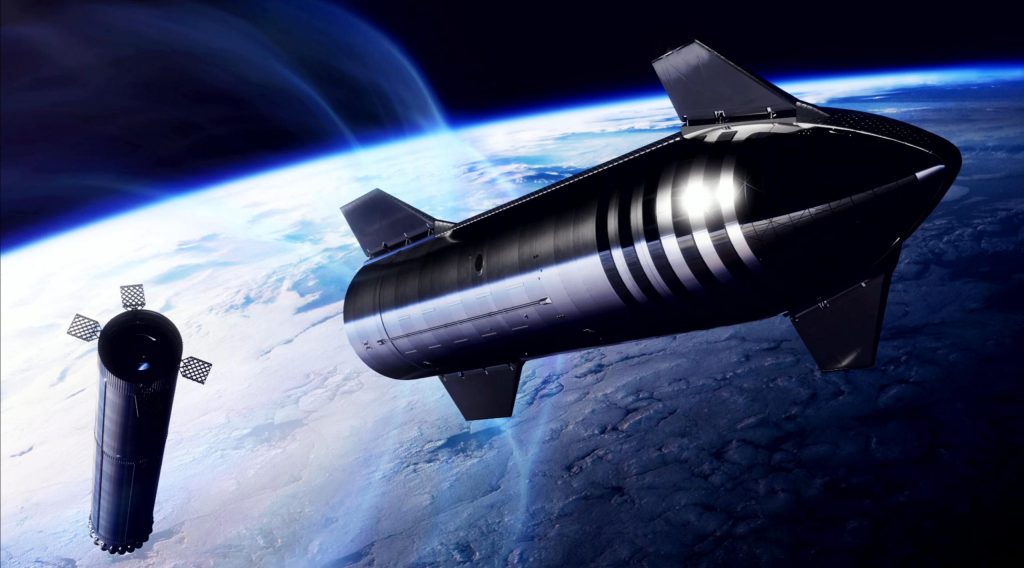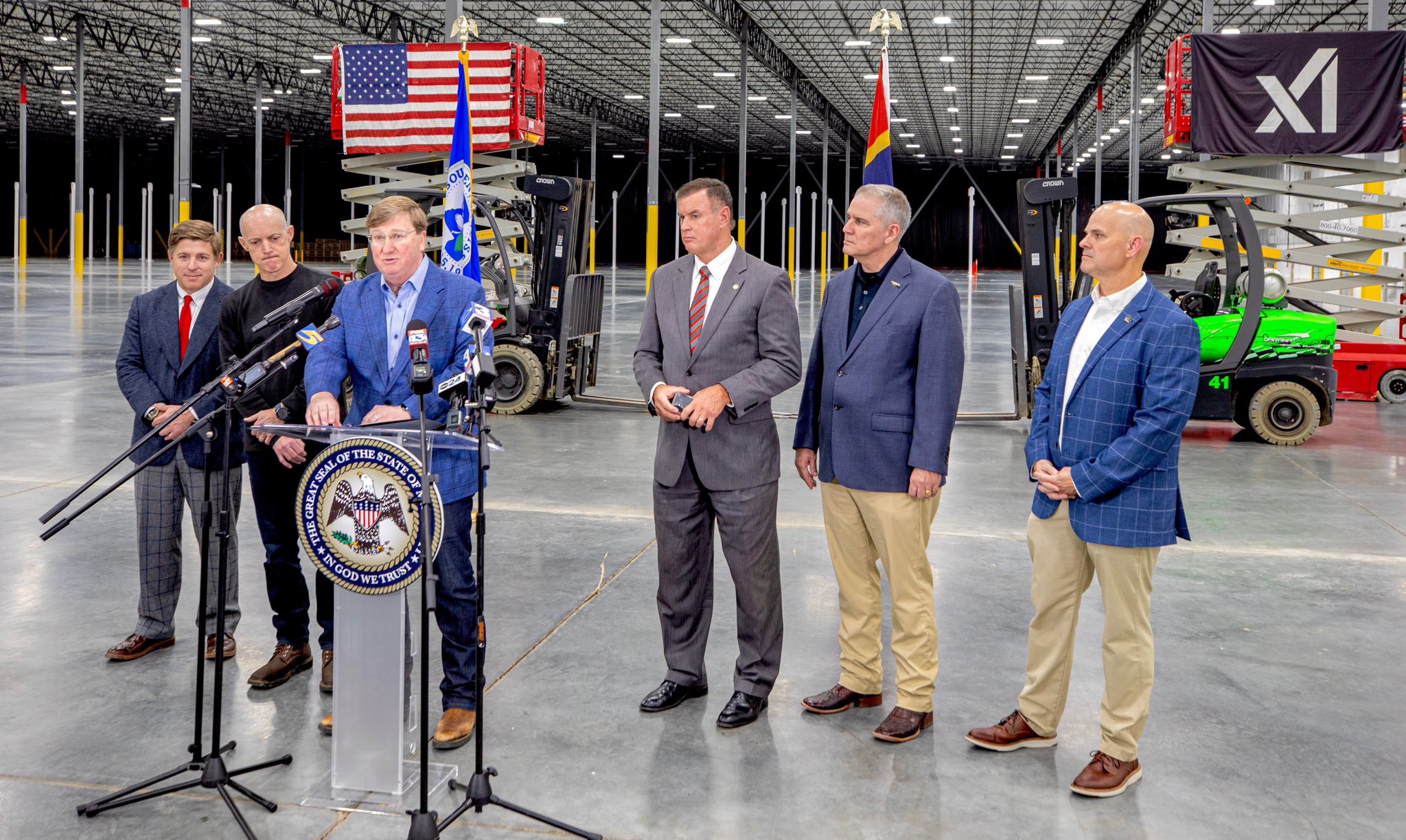

News
SpaceX to end Crew Dragon capsule production as Starship’s shadow grows
Reuters reports that SpaceX has begun to shut down Crew Dragon capsule production after assembling a fleet of four reusable spacecraft, highlighting the company’s ever-growing desire to pivot to Starship.
According to SpaceX president and chief operating officer (COO) Gwynne Shotwell, who spoke with Reuters reporter Joey Roulette, the company has already ended production of new Crew Dragon capsules after recently completing a fourth operational spacecraft. Nicknamed “Freedom” by its crew, Dragon capsule C212 (Dragon 2 capsule #12) is scheduled to debut as early as April 19th and will ultimately ferry SpaceX’s fourth crew of government astronauts to and from the International Space Station.
However, while ending production of Crew Dragon might sound like a dramatic and unexpected move after less than two years of operational astronaut launches and undeniably hints at the company’s desire for Starship to take over, it’s not quite as jarring as it seems.
Above all else, Shotwell did not explicitly mention Cargo Dragon 2 production. It’s possible that there was a miscommunication during the brief Q&A and that a generic statement about ending production of all Dragon capsules was projected onto just SpaceX’s Crew Dragon variants, but the Reuters article strongly implies that only Crew Dragon production has been ended.
As of today, SpaceX only has two operational Cargo Dragon 2 capsules in its uncrewed fleet – both of which have already flown twice. Following a recent contract extension, SpaceX is scheduled to complete at least 11 more ISS cargo deliveries and recoveries by 2027 and while it’s possible that the company is confident enough to gamble that two Dragon 2 capsules can complete all 15 CRS2 resupply missions, a SpaceX engineer confirmed that at least one more Cargo Dragon is scheduled to debut in 2022. With three Dragons, that would at least give SpaceX the ability to confidently fulfill its CRS2 obligations even if one capsule is damaged or lost.
Meanwhile, Shotwell indicated that SpaceX would preserve the ability to restart Dragon production if the need arose – far easier said than done. At the same time, the company will still need to churn out at least half a dozen or so expendable Dragon ‘trunks’ per year and continue building a wide range of replacement parts. A substantial team will also be needed to refurbish and operate Crew and Cargo Dragons for as long as launches continue.


But by and large, the move to end Crew Dragon capsule production says one thing above all else: that SpaceX is chomping at the bit to redirect large portions of its Falcon and Dragon workforce to Starship development. If SpaceX can make it work, Starship – a fully-reusable two-stage rocket – could end up costing roughly as much as Dragon and Falcon per launch but its launch costs could also plummet to a magnitude less – all while offering a magnitude more space, performance, and capabilities.
Crew Dragon is currently used to launch four astronauts at a time. A single crewed Starship could have a habitable volume greater than the entire International Space Station and carry 40 astronauts into orbit inside it in a single launch. Cargo Dragon typically delivers about three tons (~6600 lb) of cargo to the ISS. A Cargo Starship could deliver dozens of tons in one go – more cargo space than NASA would know what to do with after decades sent under the tyranny of razor-thin mass margins.
NASA is likely the single largest individual investor in Starship after contracting with SpaceX to build a version of Starship capable of returning astronauts to the Moon for about $3 billion, meaning that the space agency will be intimately aware of and involved in the vehicle’s development over the next 5-10 years. It would only be logical to extract as much value as possible out of that investment and simultaneously revolutionize the transportation of cargo and, one day, astronauts to Earth orbit and beyond.
Unfortunately, there’s no real guarantee that NASA will actually do that, but SpaceX’s choice to end Dragon capsule production so early on makes it clear that the company is more than willing to prepare the groundwork for such a transition itself.

News
Tesla Model Y Standard Long Range RWD launches in Europe
The update was announced by Tesla Europe & Middle East in a post on its official social media account on X.

Tesla has expanded the Model Y lineup in Europe with the introduction of the Standard Long Range RWD variant, which offers an impressive 657 km of WLTP range.
The update was announced by Tesla Europe & Middle East in a post on its official social media account on X.
Model Y Standard Long Range RWD Details
Tesla Europe & Middle East highlighted some of the Model Y Standard Long Range RWD’s most notable specs, from its 657 km of WLTP range to its 2,118 liters of cargo volume. More importantly, Tesla also noted that the newly released variant only consumes 12.7 kWh per 100 km, making it the most efficient Model Y to date.
The Model Y Standard provides a lower entry point for consumers who wish to enter the Tesla ecosystem at the lowest possible price. While the Model 3 Standard is still more affordable, some consumers might prefer the Model Y Standard due to its larger size and crossover form factor. The fact that the Model Y Standard is equipped with Tesla’s AI4 computer also makes it ready for FSD’s eventual rollout to the region.
Top Gear’s Model Y Standard review
Top Gear‘s recent review of the Tesla Model Y Standard highlighted some of the vehicle’s most notable features, such as its impressive real-world range, stellar infotainment system, and spacious interior. As per the publication, the Model Y Standard still retains a lot of what makes Tesla’s vehicles well-rounded, even if it’s been equipped with a simplified interior.
Top Gear compared the Model Y Standard to its rivals in the same segment. “The introduction of the Standard trim brings the Model Y in line with the entry price of most of its closest competition. In fact, it’s actually cheaper than a Peugeot e-3008 and costs £5k less than an entry-level Audi Q4 e-tron. It also makes the Ford Mustang Mach-E look a little short with its higher entry price and worse range,” the publication wrote.
Elon Musk
Elon Musk’s xAI bets $20B on Mississippi with 2GW AI data center project
The project is expected to create hundreds of permanent jobs, dramatically expand xAI’s computing capacity, and further cement the Mid-South as a growing hub for AI infrastructure.

Elon Musk’s xAI plans to pour more than $20 billion into a massive new data center campus in Southaven, Mississippi, marking the largest single economic development project in the state’s history.
The project is expected to create hundreds of permanent jobs, dramatically expand xAI’s computing capacity, and further cement the Mid-South as a growing hub for AI infrastructure.
xAI goes MACROHARDRR in Mississippi
xAI has acquired and is retrofitting an existing facility in Southaven to serve as a new data center, which will be known as “MACROHARDRR.” The site sits near a recently acquired power plant and close to one of xAI’s existing data centers in Tennessee, creating a regional cluster designed to support large-scale AI training and inference.
Once completed, the Southaven facility is expected to push the company’s total computing capacity to nearly 2 GW, placing it among the most powerful AI compute installations globally. The data center is scheduled to begin operations in February 2026.
Gov. Tate Reeves shared his optimism about the project in a press release. “This record-shattering $20 billion investment is an amazing start to what is sure to be another incredible year for economic development in Mississippi. Today, Elon Musk is bringing xAI to DeSoto County, a project that will transform the region and bring amazing opportunities to its residents for generations. This is the largest economic development project in Mississippi’s history,” he said.
xAI’s broader AI ambitions
To secure the investment, the Mississippi Development Authority approved xAI for its Data Center Incentive program, which provides sales and use tax exemptions on eligible computing hardware and software. The City of Southaven and DeSoto County are also supporting the project through fee-in-lieu agreements aimed at accelerating development timelines and reducing upfront costs.
Founded in 2023 by Elon Musk, xAI develops advanced artificial intelligence systems focused on large-scale reasoning and generative applications. Its flagship product, Grok, is integrated with the social media platform X, alongside a growing suite of APIs for image generation, voice, and autonomous agents, including offerings tailored for government use.
Elon Musk highlighted xAi’s growth and momentum in a comment about the matter. “xAI is scaling at an immeasurable pace — we are building our third massive data center in the greater Memphis area. MACROHARDRR pushes our Colossus training compute to ~2GW – by far the most powerful AI system on Earth. This is insane execution speed by xAI and the state of Mississippi. We are grateful to Governor Reeves for his support of building xAI at warp speed,” Musk said.
Elon Musk
Tesla AI Head says future FSD feature has already partially shipped

Tesla’s Head of AI, Ashok Elluswamy, says that something that was expected with version 14.3 of the company’s Full Self-Driving platform has already partially shipped with the current build of version 14.2.
Tesla and CEO Elon Musk have teased on several occasions that reasoning will be a big piece of future Full Self-Driving builds, helping bring forth the “sentient” narrative that the company has pushed for these more advanced FSD versions.
Back in October on the Q3 Earnings Call, Musk said:
“With reasoning, it’s literally going to think about which parking spot to pick. It’ll drop you off at the entrance of the store, then go find a parking spot. It’s going to spot empty spots much better than a human. It’s going to use reasoning to solve things.”
Musk said in the same month:
“By v14.3, your car will feel like it is sentient.”
Amazingly, Tesla Full Self-Driving v14.2.2.2, which is the most recent iteration released, is very close to this sentient feeling. However, there are more things that need to be improved, and logic appears to be in the future plans to help with decision-making in general, alongside other refinements and features.
On Thursday evening, Elluswamy revealed that some of the reasoning features have already been rolled out, confirming that it has been added to navigation route changes during construction, as well as with parking options.
He added that “more and more reasoning will ship in Q1.”
🚨 Tesla’s Ashok Elluswamy reveals Nav decisions when encountering construction and parking options contain “some elements of reasoning”
More uses of reasoning will be shipped later this quarter, a big tidbit of info as we wait v14.3 https://t.co/jty8llgsKM
— TESLARATI (@Teslarati) January 9, 2026
Interestingly, parking improvements were hinted at being added in the initial rollout of v14.2 several months ago. These had not rolled out to vehicles quite yet, as they were listed under the future improvements portion of the release notes, but it appears things have already started to make their way to cars in a limited fashion.
Tesla Full Self-Driving v14.2 – Full Review, the Good and the Bad
As reasoning is more involved in more of the Full Self-Driving suite, it is likely we will see cars make better decisions in terms of routing and navigation, which is a big complaint of many owners (including me).
Additionally, the operation as a whole should be smoother and more comfortable to owners, which is hard to believe considering how good it is already. Nevertheless, there are absolutely improvements that need to be made before Tesla can introduce completely unsupervised FSD.








